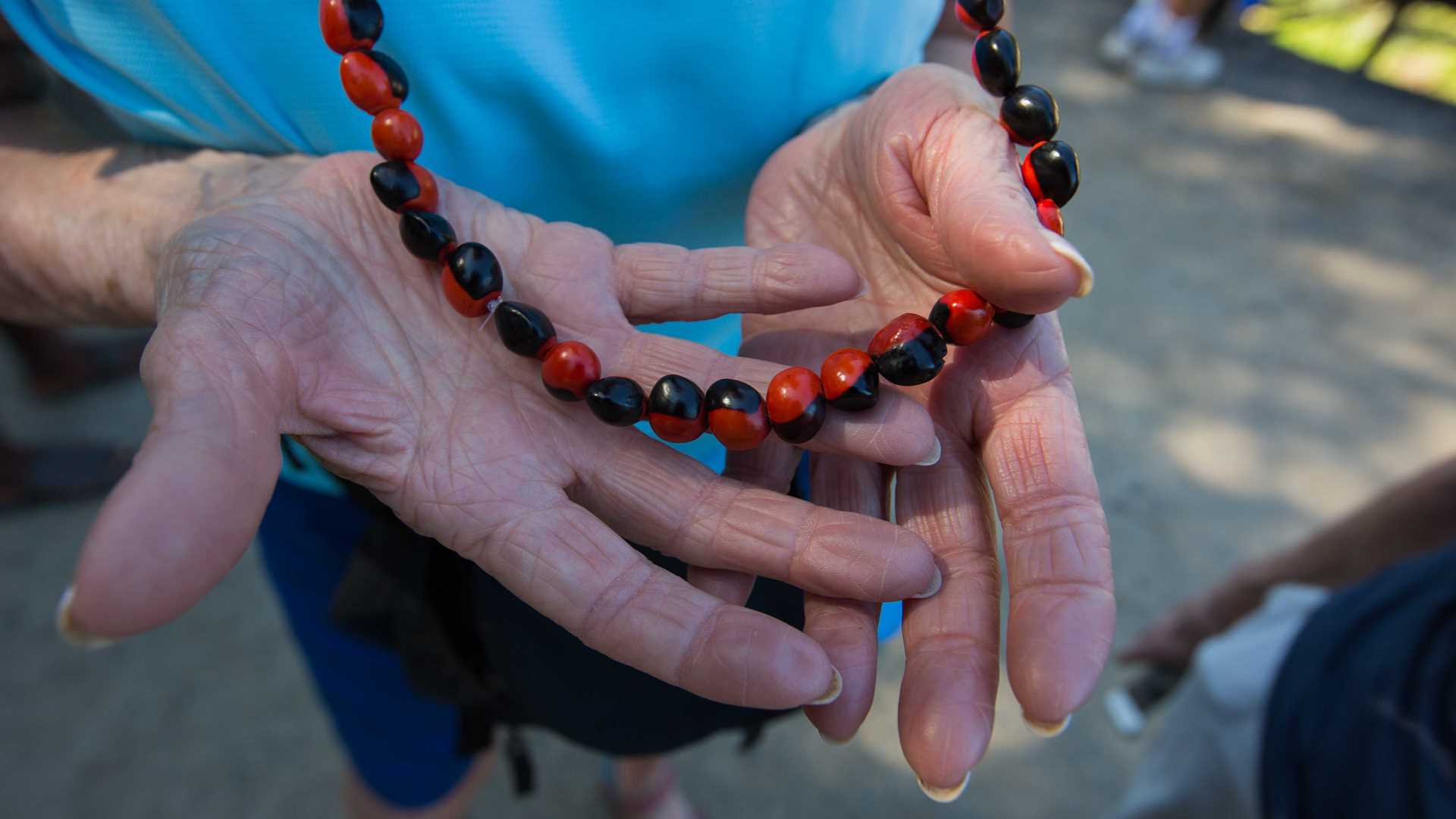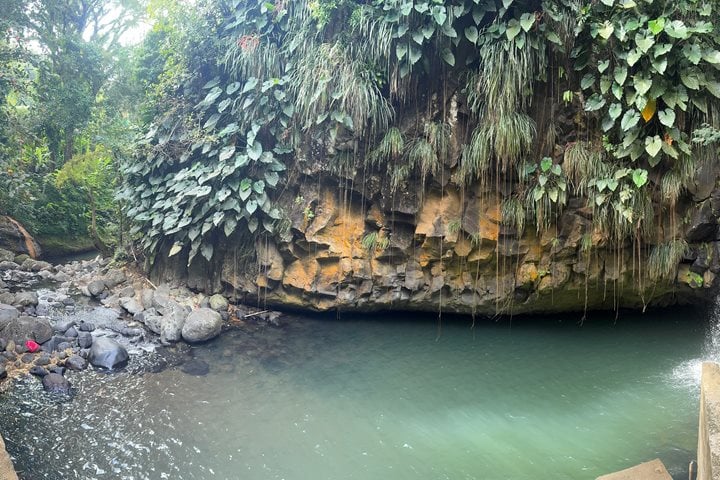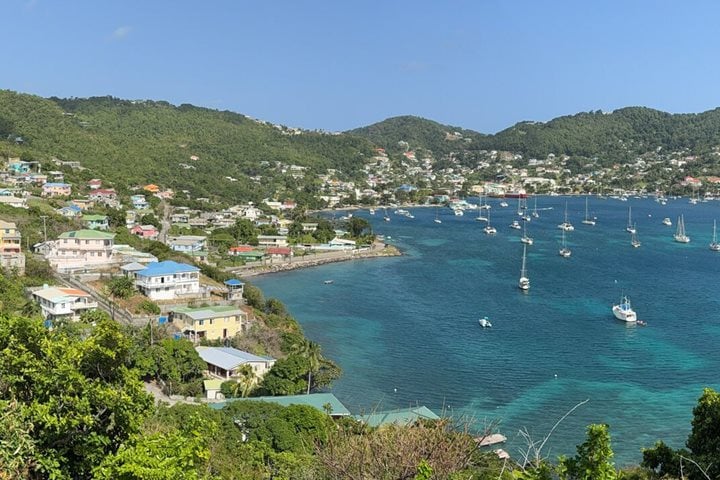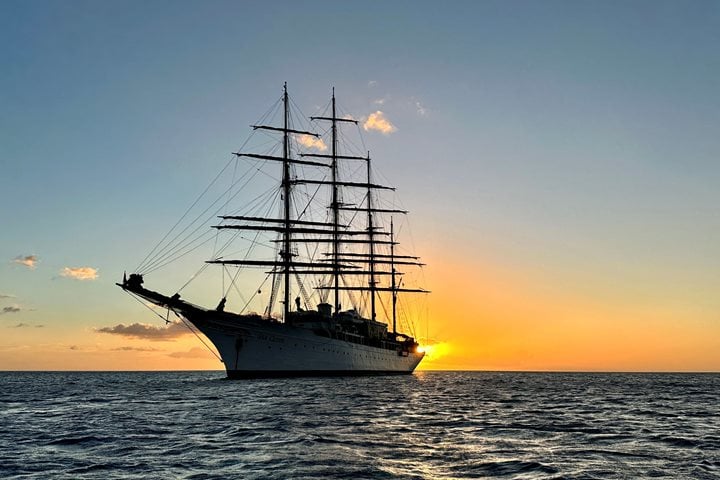The sun rose this morning at 6:10 a.m. I spied St. Lucia’s famously majestic Pitons rising over the sparkling bay shortly after. There were a number of us on the port side awaiting the view. The village of Soufriere (“Sulphur Air”) was our port of call. Soufriere was the first capital of this independent island nation and is located in the south west of St. Lucia. The town of Soufriere (population 11,500) sits on the west end of an ancient caldera, which volcano blew the western ridge of the mountain chain away about 39 thousand years ago. It last erupted in the mid-18th century. The setting is picture book perfect.
Once at the caldera we could see the fumes from the boiling cauldron bubbling with molten rock, sulfuric gases (hydrogen-sulfide), and a viscous dark mud water mixture. Our guide for the day was Jillian, a knowledgeable and garrulous native of the area. Our first stop was the visitor center where we saw a five-minute video on the volcanology of the island and Soufriere in particular. The smell of sulfur was pungent, especially when the wind shifted. A professional guide at the caldera’s edge explained the nature of the volcanism we were observing.
Our next stop was the Diamond Botanical Garden, a gift to the island by the owners, the Du Boulay family. The Du Boulays received the land of some five thousand acres from King Louis the XIV in 1713 and the present owner is a lineal descendant. The garden is a cornucopia of tropical plants of every variety, from the spectacular heliconias with their blinding vivid yellows and reds to the wonderfully stately nutmeg trees. I found the discussion of the bamboo’s botany—the national plant of St. Lucia which can grow eight inches a day and reach 50 feet tall and 6 inches in diameter—riveting. We spent an hour in the garden and after our visit we returned to our vans for the very short drive to the center of Soufriere. We also managed to see some wonderful birds, e.g., king birds, greater antillean bull finch, and a selection of hummingbirds.
We drove though the old colonial town of Soufriere and some of us walked its lanes. It is not overly visited and thus has kept much of its original flavor. The wooden multi story homes are rickety and hang perilously over the small lanes. Hummingbird Beach was our next destination. The snorkeling was spectacular in the crystal clear waters and all varieties of coral and fish were present in great abundance. Lunch was served on the Lido framed by a view of the great Pitons. The sea is quite deep here in the bay and the Sea Cloud was anchored in 185’ of water. I noticed a lot of the local Piton beer being served at lunch!
We made a very nice sail from St. Lucia and reached a speed of 6.5 knots.
At 4:30 Ian was on the foscle showing how to shoot photos on the Sea Cloud in sun under sail. Tonight we had the most scrumptious Caribbean barbeque on the lIdo under moon light. There was a special treat as our inimitable Sea Cloud Chanty gang gave their all in a rendition of traditional sea chanties.







